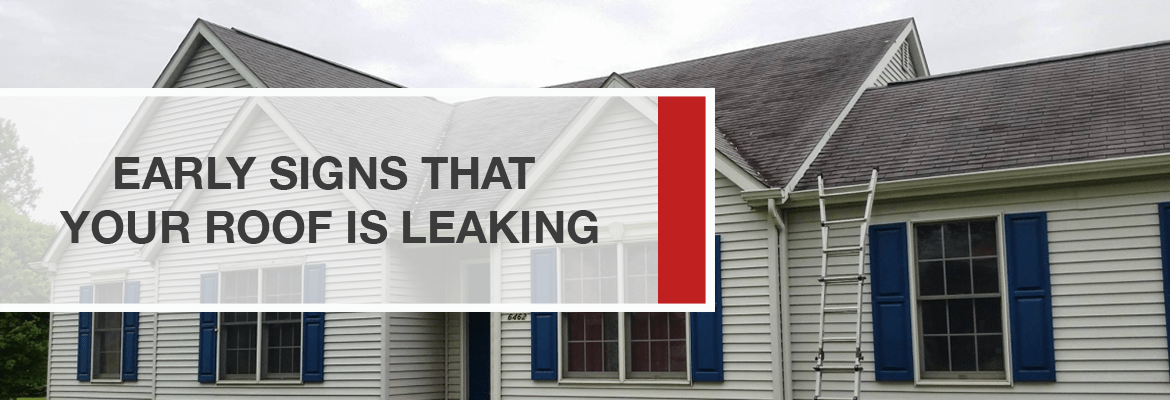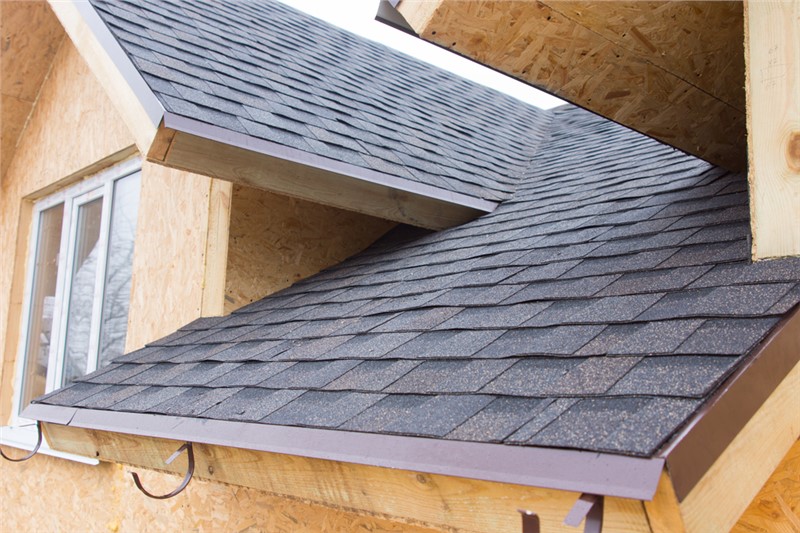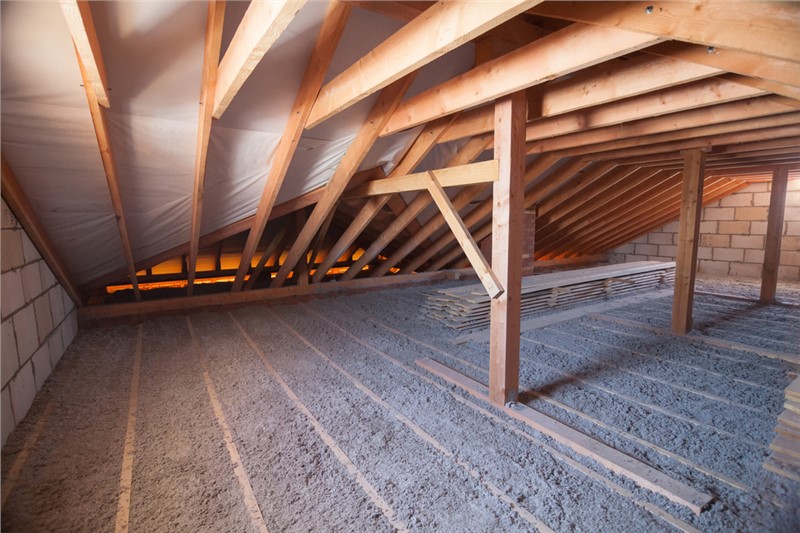Seasonal Roof Maintenance Tips
We recommend you do a quick roof inspection every three months to be aware of any problems, but you won’t need to spend a lot of time with this preventative maintenance task every time. Once a year, either in the late fall or early spring, you should consider spending a few hours with the tasks to clean up and fix up the top part of your house. This includes inspection of the shingles, flashing, chimney, vent pipes, gutters and eaves.
You may find some shingles that need to be replaced, a damaged chimney cap to be reinstalled or moss growing. By catching the little things soon after they’ve just happened, you’ll save yourself the added expense of avoidable repairs when these minor problems are left to cause deterioration and decay of major sections of your roof.
Home Roof Maintenance Checklist
The lists for each season will touch on some of the issues to look out for. We'll also provide more information on how to deal with some of those problems will be provided after the checklist. We’ll start with the most popular time for outdoor maintenance: the fall. The coming cold temperatures and heavy snow and ice call for a special approach to protect your roof for the winter.
Roof Maintenance for Fall
- Clean out debris from gutters, checking if there are any repairs needed on gutters like tightening brackets and rejoining sections.
- Look at the state of all the shingles to see if there are any damaged or deteriorating sections that need to be tended to.
- Notice if there is any growth of moss and algae starting.
- Check for cracks in the mortar or chimney area and reseal with caulking.
- Remove all debris like leaves, branches and other objects from your roof. These can cause damage by wearing away shingles and be a host of mold.
- Trim any overgrown trees that are touching or close to your roof. This prevents to them from damaging shingles or other roofing materials and to prevent animals from having easy access to your roof where they can cause damage.
- Ensure your attic is well-insulated, which will help keep the heat inside your home and prevent ice dams from building up on your roof.
Roof Maintenance for Winter
- Check the accumulation of snow and ice regularly, especially after a heavy snowfall. Remove buildups yourself if you feel you can do it safely, or hire a professional to do the job (see below for more information on dealing with snow and ice accumulation).
- Look at your roof after weather with high winds. You'll need to see if there are any heavy limbs or other debris that have been blown onto your roof.
- Consider installing ice melt socks in your gutters or attach heat tapes and belts to your roof. This will help with melting snow and ice if you tend to have a problem with ice building up on your roof in the winter.
Roof Maintenance for Spring
- Walk around your house to get a good view of your roof and notice any signs of wear and damage to shingles, gutters, soffit, fascia, flashing, chimney and vents.
- Inspect the inside of your house for visible signs of leaks on all your ceilings and in your attic. Peeling paint, black or molding spots and water stains are all possible indicators of a roof leak.
- Check that gutters and downspouts are free of debris and able to flow the rain away from your house.
- Check for signs of growing moss and algae.
- Assess the state of your shingles, especially if your roof is over 15 years old, to determine if you need to consider replacing your roof. Here are some signs that your roof is nearing the end of its life:
- Many colored granules are present in your gutters that have worn off your shingles.
- Several sections of shingles are visibly worn, curling, damaged or blistering.
- Several shingles are missing.
- Masses of moss and lichen are covering the roof.
Roof Maintenance for Summer
You won’t have to work too hard on roof maintenance in the summer if you’ve been taking care of and inspecting your roof the rest of the year. The same basic inspection you did for the other seasons may be all you need to do. Warmer weather and longer days allow the majority of home improvement projects to happen in summer, so call us out at any time for professional advice.
- Walk around your house to get a good view of your roof. Look for any signs of wear and damage to shingles, gutters, soffit, fascia, flashing, chimney, vents.
- Check that gutters and downspouts are free of debris and able to flow the rain away from your house.
- Clean off any debris and fungal growth on your roof.
- Trim any overgrown trees that are touching or close to your roof to prevent them from damaging shingles or other roofing materials. This will also prevent animals from having easy access to your roof where they can cause damage.
Roof Moss, Algae and Fungus Eradication
If you have black streaking or discoloration of roofing material, you may have a problem with mold, algae or fungus. Moss can also find your roof a welcoming environment. Particularly if organic material is left on your roof to be a host to moss growth. Over time your shingles and wood will deteriorate from biological materials developing on them and lead to a leaky roof.
Algae, mold and fungus will thrive on a roof that is in shade for long periods of time and north-facing, especially during times of high humidity. Trimming back trees to allow more sunlight to hit your roof and more air flow around your roof may be helpful for recurring issues. You can also apply zinc strips along the top of your roof. These release zinc oxide over your whole roof surface when it rains. This prevents growth of algae, moss, lichen, fungus and mildew.
Snow and Ice Accumulation
Winters are hard on your roof. Snow can build up, adding extra weight to the surface. The melting and freezing cycle that can occur all throughout winter causes dangerous icicles to hang from the eaves and ice dams to occur. The most effective way to prevent this from happening is to:- Regularly shovel the snow off your roof with a roof rake. Be sure to remove all snow! Just removing snow from the bottom part of your roof will cause an ice dam to occur where the snow was left.
- Prepare your home for the winter weather with adequate attic insulation and roof ventilation to keep your roof cold.
- Place ice melt socks (a permeable material filled with an ice melting treatment) in gutters or at the bottom of the roof.
- Install heat tape or an ice belt to the eaves.
Early Signs That Your Roof Is Leaking
Noticing the early signs of your roof leaking is very important and should be on your radar all year long. If your roof is over 15 years old, it could be more susceptible to damage that will cause it to leak incurred by a storm with particularly heavy winds or hail. If you notice any of these early warning signs, contact J & B West to take an assessment of the integrity of your roof:- Dampness around fireplaces
- Water stains on pipes that vent your water heater and furnace
- Dark or stained areas on your ceiling
- Peeling paint on ceilings
- Peeling paint on fascia under eaves
Leaking and Condensation
If you notice water stains when fall’s cold weather hits, you may have inadequate insulation or ventilation. This causes hot air to meet cold air at your roof which will create water beads of condensation. Leaking will be most present during heavy precipitation, primarily in warm seasons.
Call us today for a diagnosis and estimate.Cautions for Your Roof Work
Much of the general maintenance tasks and minor roof repairs and cleaning are easy for any homeowner to do. However, if you are nervous in high places or just simply don’t want to do the regular roof maintenance yourself, be sure to call us at (219) 363-6151 to do it for you so you can get the longest life out of your roofing material.
As you’re working around your eaves, be aware of any wasp nests that may be present. Inside gutters and under eaves are favorable locations for wasps to build their nests.The Cover That Matters Most
The seasonal changes throughout the year create a harsh outdoor environment. Your roof has to adapt to many fluctuations in temperature and chaotic surroundings. Your roof may look like it just covers your house, but it helps with various things that benefit your property. For example, the overhanging eaves and gutters keep rain directed away from your foundation and the side of your house. Your roof is also a source of energy savings when properly constructed and maintained with appropriate insulation and ventilation. It’s also an architectural element that can be creatively designed with peaks, valleys, high pitches and unique dormers.
Just like any part of your house and property, your roof requires a bit of care and attention so you can enjoy your home to the fullest inside and out. We hope these seasonal roof maintenance tips provided you with the information to help you feel confident to complete most of the minor tasks yourself. However, if you’d like some help with any repairs and maintenance, we can be of service to you. Contact us at (219) 363-6151 for any of our professional services that will keep your home in top-quality shape.
Tags
Subscribe to J & B West Roofing and Construction's Blog












Comments